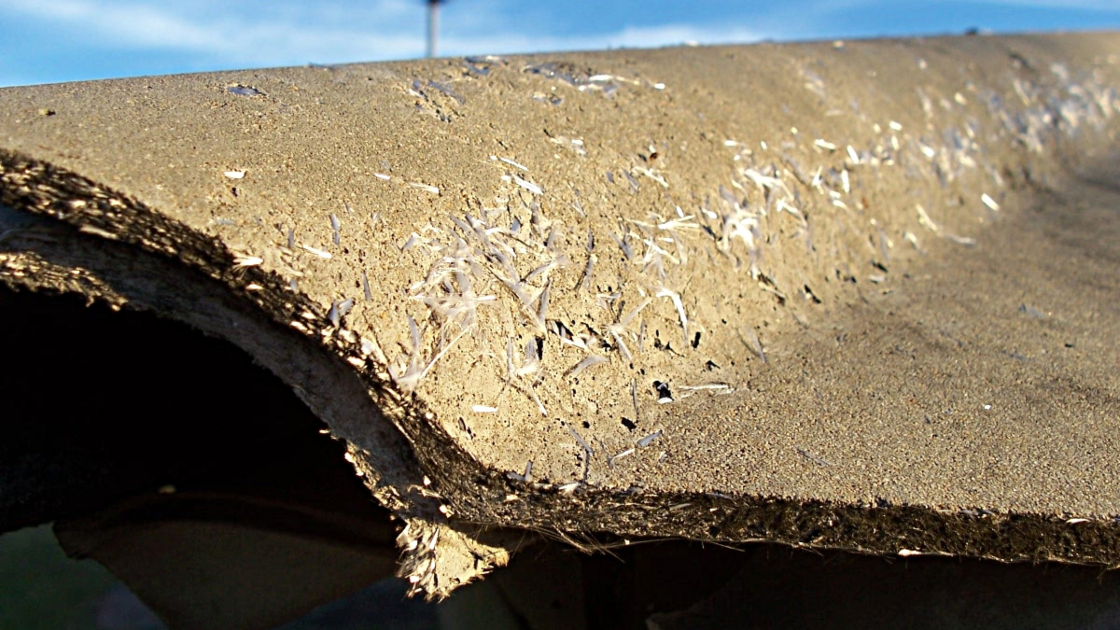
16 Apr • 3 min Read
When it comes to waste and just living in general, asbestos can be one of the most dangerous materials to come across.
Asbestos is a toxic chemical compound that is the cause of several health complications. It was popularly used in building materials in Australia from the 1920s through to the late 1980s. Now banned, the naturally occurring mineral fibre can still be often found in demolitions and renovations across the country due to its long period of use.
If you find yourself with damaged asbestos, you must take precautions. This includes having it removed and disposed by waste professionals.
To find out more on the importance of asbestos removal, keep reading below.
The repercussions of asbestos
To fully understand the danger and urgency of removing damaged asbestos, you should first know its implications.
When asbestos-filled materials such as fibro sheets are disturbed, the fibres are released, making it easy to be inhaled. When breathed in, the fibres can cause significant health issues.
Large amounts of exposure have been found to lead to diseases such as asbestosis, lung cancer and mesothelioma. In saying this, even minimal exposure is still deemed dangerous, making it highly important that you avoid being around active asbestos materials.
If you have been impacted by asbestos, it can be hard to diagnose, with symptoms of exposure generally not appearing until 20-30 years after the first asbestos exposure. This further emphasises reason to be cautious due to its prolonging effect.
Where asbestos can be found
As it was heavily used in households through the early and mid-’90s, a majority of homes built before 1987 may have asbestos materials used in the structure. Asbestos was often used in building construction due to its robust and affordable qualities.
Some common household materials which may contain asbestos include fibro sheeting, water pipes, roofing and the back of flooring. It can also be in other items found on a property such as cement flooring, fences, garages and sheds.
Fast forward to the future, it has become common for a lot of building renovations and simple household maintenance projects to come across asbestos materials.
The NSW Environment Protection Authority (EPA) confirms asbestos material do NOT need to be removed if it has been left alone or remains in good condition.
However, if asbestos material has been damaged or disturbed, it will need to be removed as this will pose a potential health risk when the fibres are released. This also includes asbestos materials you plan to renovate.
If you are considering renovations and are concerned about potential asbestos materials, it is advised you organise a licensed asbestos assessor.
This way, they can test possible materials and can assess your environment to ensure it is deemed safe once removed.
How to properly dispose of asbestos
It is important to note that proper asbestos removal is essential. Due to it being highly dangerous, it is a legal requirement for it to be disposed properly.
Unlike other waste, asbestos isn’t allowed at all facilities, and can only go to particular facilities for disposal. It MUST not only be taken down safely by a licensed remover, but it should also then be disposed at a legal facility.
If these legal requirements are not followed, hefty fines will apply. This is why it is critical you only hire licensed asbestos removalists and a reliable waste service that strictly follows the regulations.
With Matt’s Skip Bins, you can be sure that we follow all legal waste regulations. This includes following the right procedures for waste transport and the designation of waste disposal with all of our skip bins across Sydney.
If you find yourself needing a waste solution, give us a call on 02 4708 2927.




